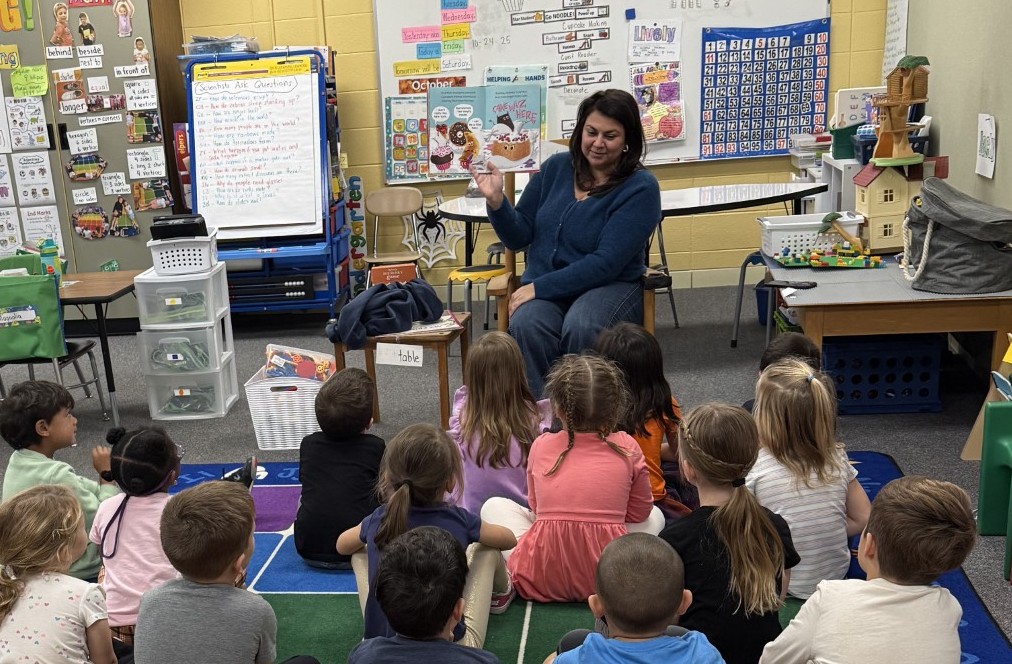Leveraging Technology to Assess Student Learning
Leveraging technology to assess student learning is a viable option to make it more engaging and fun

Assessment is often connected with testing and exams, and is not often associated with being technology-infused. Moreover, students may become a bit nervous when they learn that they will be assessed, which may impact their performance.
The good thing about using technology for assessment purposes is that students have the chance to demonstrate their learning by using exciting tools. And students may not realize that they are being assessed, which has the potential for them to demonstrate their learning without the fear of failure.
While this list is not exhaustive, here are a few ideas for using technology to assess student learning.
Infographics
Our students are expected to take in a massive amount of information, and then summarize to teachers in succinct ways. Infographics are a digital tool perfect for sharing large amounts of information in small chunks, creatively. Dozens of free tools are available, such as Canva, Adobe Express, and Visme, which also have templates students can use to create their infographics.
For example, in social studies, you could have students illustrate the three branches of government or in a math class students can create an infographic that shows order of operations (for example PEMDAS- please excuse my dear aunt sally). Even with using templates, you can create parameters for how much content, words, if they are numbered, etc. are required for the infographic, while also avoiding stifling students’ creativity. And students can use the infographics as a formative assessment and study guide to prepare them for larger, end-of-unit summative assessments.
Mind Mapping and Diagrams
Brainstorming is an important skill that students may need to demonstrate. Or you may want to assess students’ ability to make connections to different pieces of information.
One brainstorming activity students can do using technology is mind mapping. A tool such as Popplet, especially for younger learners, would allow students to have one focal point in the center, and map out pieces that align. For example, in a science class, students can demonstrate their understanding of species by starting with “species” at the center of the mind map and then drawing up connections, such as types of species, the food chain, and habitats.
Tools and ideas to transform education. Sign up below.
Students can also use a tool such as Lucidchart to make diagrams. For example, in the same science class, you may want to see that the students know the parts of the human body or in a history class students could create a hierarchical diagram of governmental officials.
Demonstrations and Connection
As an alternative to traditional presentations, using social technologies is a great way to integrate internet-based tools that students enjoy, while allowing them to demonstrate to you what they have learned.
For example, you could have students who are working on their public speaking skills in an ELA class (i.e. elevator speeches) use TikTok to get their point across effectively and succinctly. Fellow students may be more inclined to review their peers’ work if they are required to go to TikTok for a review, versus watching them live in class.
Tiktok can also be used for students to demonstrate their math skills. For example, in a geometry class students can use their bodies and props to show their teachers their understanding of different angles.
To show understanding of equivalences, Pinterest could be used. For example, if you want to determine if your students understand measurement equivalents, you could ask them to find pictures of different objects that have the same weight equivalence (i.e. a picture of a gallon of milk and a picture of two half gallons of milk).
I hope you see that assessment does not have to be mundane, only involving traditional tests and examinations. Leveraging technology to assess student learning is a viable option to bring the fun and excitement that students experienced as you engaged them in the lesson, while also showing you what they know.
This article is the final of three which has focused on using technology for all aspects of teaching and learning including, instruction, engagement, and assessment. To review more about the first two articles, check out Leveraging Technology to Support Lesson Creation and Instruction and Leveraging Technology to Better Engage Learners in Lessons.
Dr. Stephanie Smith Budhai is faculty member in the College of Education and Human Development at the University of Delaware, focusing on Educational Technology, Learning Design, and Justice-centered Pedagogies. She holds two national education technology leadership positions on the Information Technology Council and as Chair of the Culture and Climate Committee for the Society for Information Technology and Teacher Education (SITE). She holds a Ph.D. in Learning Technologies, and a M.S. in Information with a specialization in Library and Information Science, and K-12 teaching certifications in Technology Education, Instructional Technology and Business, Computers, Information Technology, Special Education and Elementary Education. Dr. Smith Budhai is the 2021 SITE Emerging Leader and the 2017 ISTE Awardee for Excellence in Teacher Education. She is also a Nearpod, and VoiceThread Certified Educator. Dr. Smith Budhai has more than a decade of online teaching experience, and has published myriad books (two have been translated into Arabic), articles, and invited editorials surrounding the use of technology and online learning in education. A few of her book publications include:
- Critical AI in K-12 Classrooms: A Practical Guide for Cultivating Justice and Joy
- Best Practices in Engaging Online Learners through Active and Experiential Learning Strategies
- Leveraging Digital Tools to Assess Student Learning
- Nurturing Young Innovators: Cultivating Creativity in the Classroom, Home and Community
- Increasing Engagement in Online Learning: Quick Reference Guide
